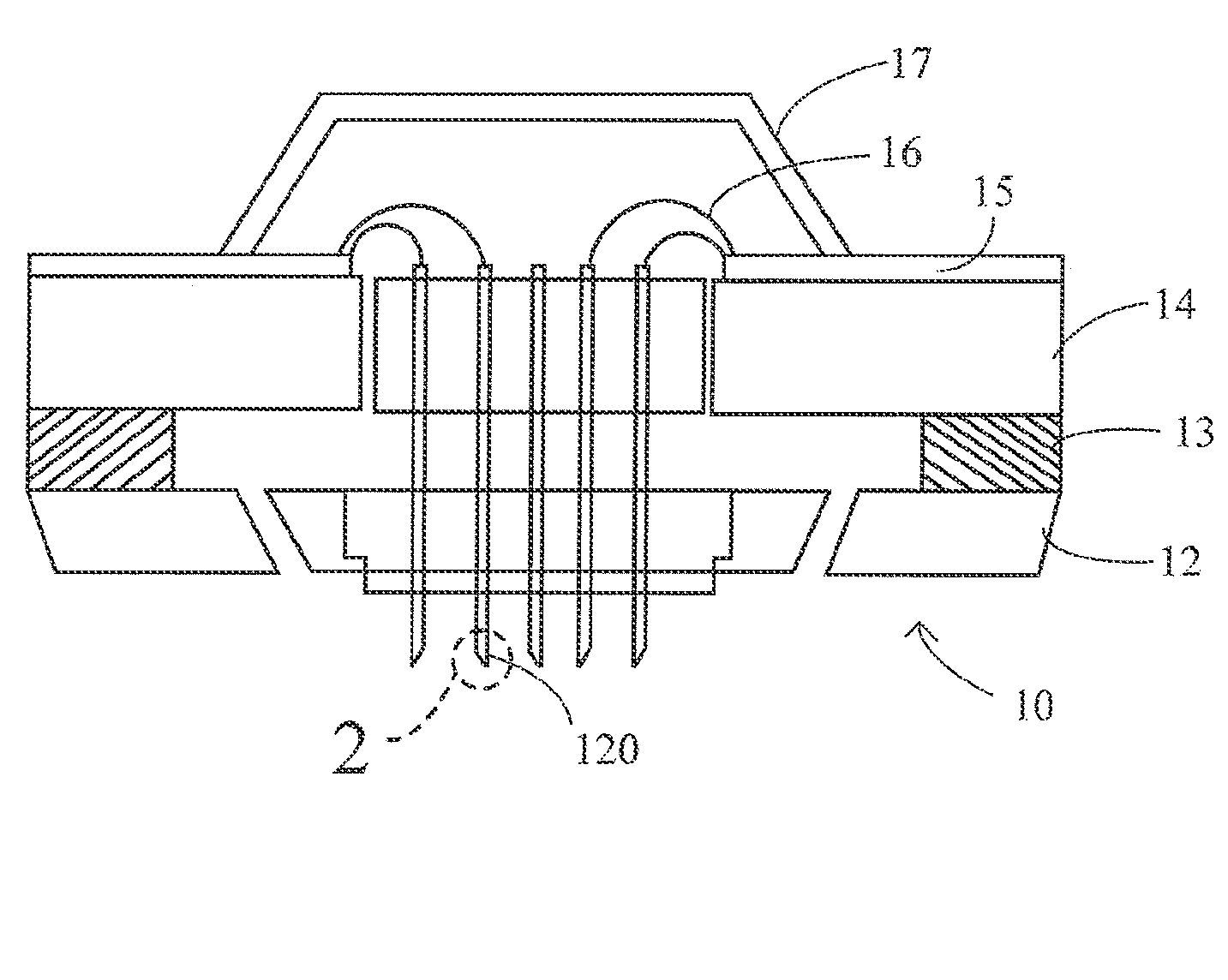Test probe
a test probe and probe body technology, applied in the field of test probes, can solve the problems of affecting the manufacture cost, not being carried out by a batch fabrication, and not being able to meet the requirements of testing, so as to improve the no-clean property, reduce the contact force, and improve the effect of no-clean property
- Summary
- Abstract
- Description
- Claims
- Application Information
AI Technical Summary
Benefits of technology
Problems solved by technology
Method used
Image
Examples
Embodiment Construction
[0019]A preferred embodiment of the present invention provides a test probe which comprises a plurality of probes and a nano-film of conducting polymer, wherein the probes are made of metal material and installed on a test fixture, and the nano-film of conducting polymer is coated on the probes.
[0020]In the present invention, the nano-film of conducting polymer can be preferably selected from conducting polymer having a no-clean property. For example, the conducting polymer can be selected from the group consisting of polypyrrole, polyparaphenylene, polythiophene, polyaniline, combination thereof, and derivative thereof. The thickness of the nano-film of conducting polymer is preferably about 1-20 nanometer (nm), especially about 1-5 nm.
[0021]In the present invention, the probes are made of the metal material which can be preferably selected from the group consisting of nickel (Ni), gold (Au), copper (Cu), tungsten (W), rhenium (Re), titanium (Ti), beryllium (Be), stainless steel, o...
PUM
 Login to View More
Login to View More Abstract
Description
Claims
Application Information
 Login to View More
Login to View More - R&D
- Intellectual Property
- Life Sciences
- Materials
- Tech Scout
- Unparalleled Data Quality
- Higher Quality Content
- 60% Fewer Hallucinations
Browse by: Latest US Patents, China's latest patents, Technical Efficacy Thesaurus, Application Domain, Technology Topic, Popular Technical Reports.
© 2025 PatSnap. All rights reserved.Legal|Privacy policy|Modern Slavery Act Transparency Statement|Sitemap|About US| Contact US: help@patsnap.com


